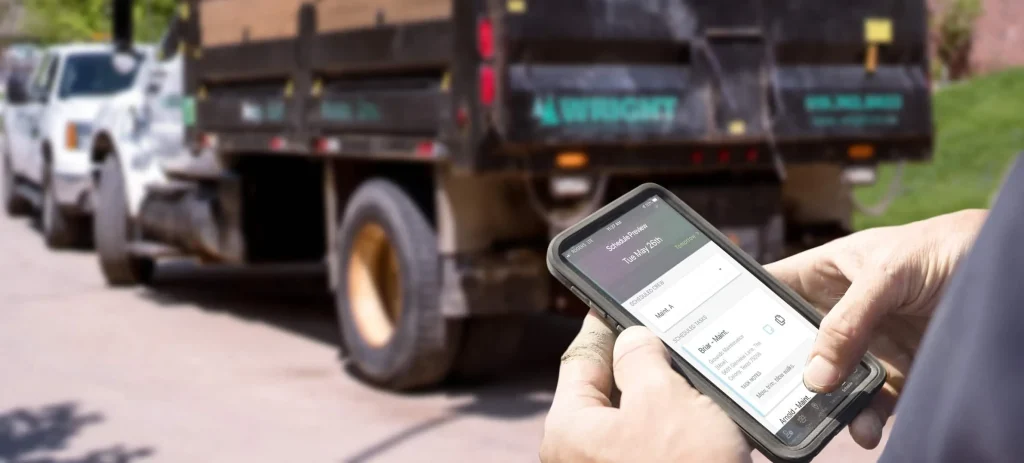Could there be a way to sell more work, at a higher profit, for a lower cost in the landscape industry? There is, and in this crash course, we’re going to show you EXACTLY how to improve profit margins. If you’re a landscape business owner who’s ready to double your profit margins–-without hiking prices or increasing costs, you’ll get step-by-step instructions to achieve ‘Super Profit’ status (yup, it’s a ‘thing’).
Introduction to Super Profit for Landscape Business Owners
Super Profit refers to earning much larger profit margins on your work than the industry standard. The landscaping industry operates somewhere between 2% and 10% profit. Landscape professionals and companies that make Super Profit have found ways to earn profit margins of 30%, 40%, even 50% net profit on a portion of their work. Super Profit is how your company will make the leap from average to extraordinary, earning profit margins of 10%-25%-doubling (or more!) the average industry profit.
You can achieve Super Profit status by making the most of every hour, eliminating waste, and generating more total revenue per man-hour. In essence, Super Profit isn’t achieved by increasing prices but by increasing efficiency and productivity.
Want to learn tips on how to succeed in today’s economy?
Attend an LMN Workshop near you or give our landscape business software a try for free.

Lesson #1: Putting a Price on Wasted Time
The road to Super Profit starts with identifying (and quantifying) the inefficiencies in your business. Sit down with your foremen early this Spring and brainstorm a list of reasons for wasted time.
Create a spreadsheet like the template below.
Step 1: Identify the problem/waste. We’ve included some examples. You could likely fill 50 rows once you get going!
Step 2: Estimate how many man-hours per week (not crew hours, but man-hours) are spent on each waste. See the sample spreadsheet below:
DOWNLOAD THE SPREADSHEET: THE REAL COST OF WASTE
Step 3: Now go through that same list, but this time add the following:
The average number of weeks in your working year
Your average charge-out (billing) rate per person-hour
Step 4: Then multiply the person-hours per week by the working weeks per year to get the total hours per year lost to each waste.
Step 5: Multiply that total by the charge-out rate you typically bill your customers, and that’s how much revenue is lost per year to each waste.
DOWNLOAD THE SPREADSHEET: THE REAL COST OF WASTE
Want to learn tips on eliminating waste and increasing efficiency in your landscape business?
Attend an LMN Workshop near you.
Lesson #2: Spotlight on Sharing Equipment
It’s time to break down the real cost of wasted time when it comes to landscape equipment. Let’s look at the expense of moving a piece of equipment, for example. You might think it’s the fuel or the wage you pay the driver to load and move it. However, the real cost is as follows:
- 1 hr inspecting a truck and trailer and driving to the site with the equipment
- 1 hr loading down, strapping, and inspecting the loaded equipment
- 1 hr driving to the next site and unloading the equipment
- 1 hr getting back to the shop and disconnecting the trailer
That’s a total of 4 hours of billable opportunity lost. If your typical charge-out rate was $50/hr, you’ve lost $200 of potential revenue.
Instead of moving that equipment, your employee could have spent that time on billable work, i.e., installing pavers, planting shrubs, building a deck, etc. and with those 4 hours focused on finishing a job sooner, you’d have 4 hours of extra capacity to do another job before the end of the year.
When you add up all the extra capacity opened up by eliminating waste and staying focused on billable work, it’s not hard to see how each crew can complete an additional $50,000 – $100,000 of billable work in a season.
Want to learn tips on increasing billable work?
Attend an LMN Workshop near you.
Lesson #3: Goodbye Waste, Hello Super Profit
And this is precisely where the idea of Super Profit comes in. When you can take wasted hours and turn them into billable hours for your lawn and landscaping company, you hit Super Profit.
Your costs on this extra work are minimal, and your profit goes through the roof. Assume the crew in the example managed to identify and eliminate $50,000 worth of waste and inefficiency. (Note: many companies find it easy to identify $25,000 worth of waste before they leave the yard in the morning)
The net profit margin on that extra $50,000 is your Super Profit.
Let’s break down exactly where your Super Profit comes from (and where it doesn’t) :
Normal Profit: We’ll assume you charge a fair profit on all your work. If you complete an extra $50,000 in work, we can assume you also earned an extra 10% in net profit.
Labor costs: Would you have any extra labor costs to do that extra $50,000 in work? Yes, you’d have labor costs, but they’re not additional costs because you’re already paying wages for the waste of time anyway. All we’re doing is exchanging wasted hours for billable hours. What would normally be counted as labor costs on this extra work (field labor costs are typically 20 – 35% of sales) now becomes net profit.
Equipment costs: whether you are a lawn care company or landscape contractor, your leases and insurance don’t increase because your landscape business sales went up. Fuel and maintenance costs may increase slightly. Equipment costs are typically 10-15% of sales, and since they increase only slightly with the extra work, you’ve likely found another 10% net profit.
Materials costs: If you’re installing materials, these costs will increase with additional work. No extra profit to be found here.
Overhead costs: Your overhead costs don’t increase because your crew improved productivity. Overhead costs typically range from 15% to 35% of a company’s sales, meaning the average company generates an extra 25% net profit here as well.
If you look at that extra $50,000 in work the crew generated, the net profit margin on that extra work is incredibly high. Because labor, equipment, and overhead costs don’t significantly increase, you can expect to return net profit margins of 50% or more on this extra $50,000 of sales.
Want to learn tips on maximizing net profit?
Attend an LMN Workshop near you
Lesson #4: More Money, Less Problems
Now you’ve got a very profitable company with some bonus capital available to reward those employees who made it happen. While most of your sales will be in the standard 10% profit range, the extra sales generated through increased productivity can help your company more than double its total profit in a very short time frame.
At the end of the day, staff and owners alike are driven by a passion for creating outdoor environments, and we’d love to earn more for the hard work we invest in bringing our customers’ visions to life. When landscape business owners focus on transforming waste into productivity to achieve Super Profit, everyone gets paid.
Want to learn landscape business owner tips on rewarding your employees?



